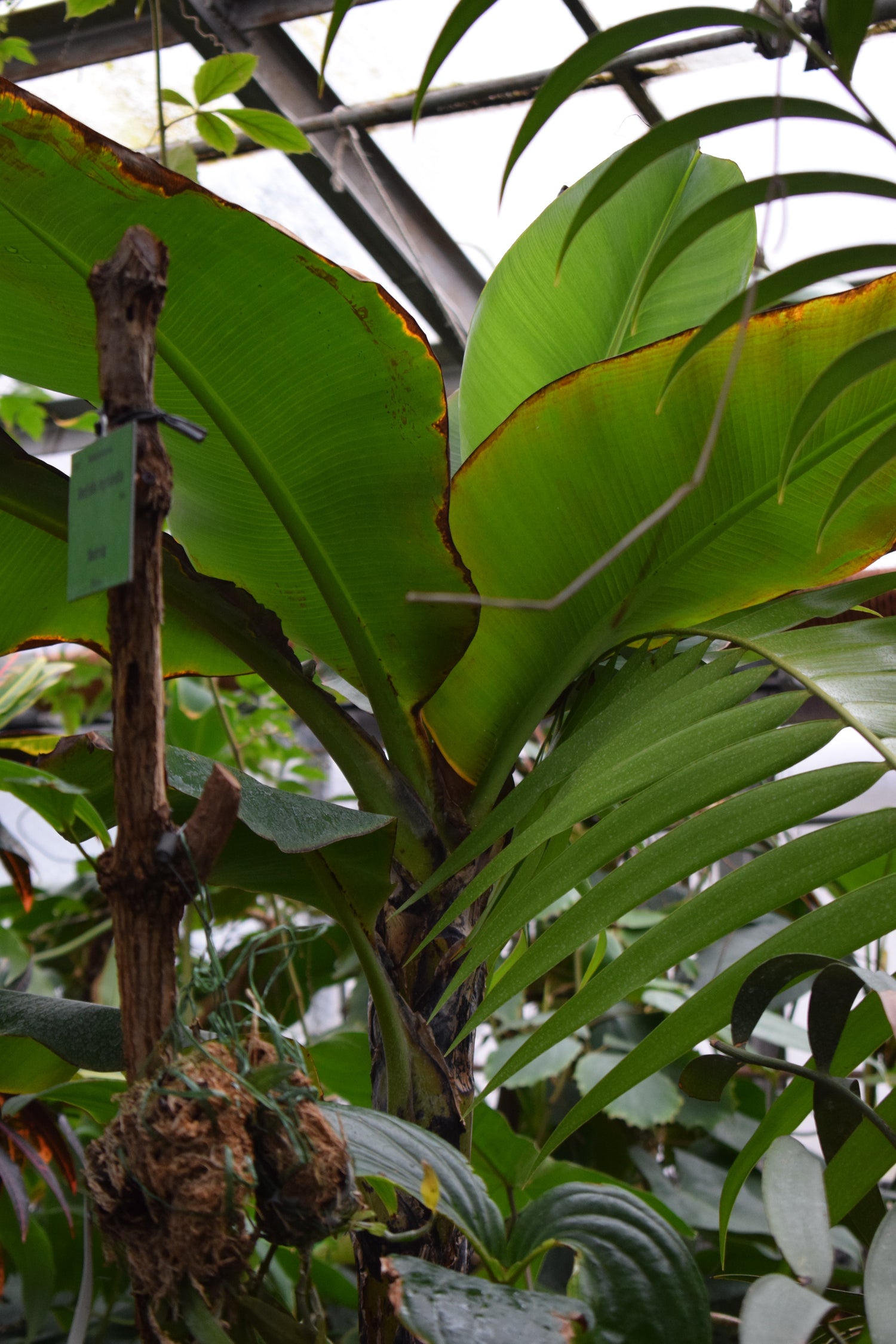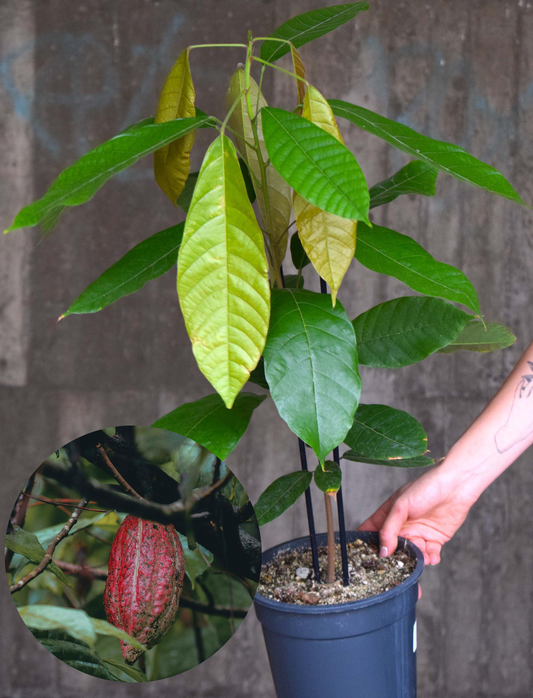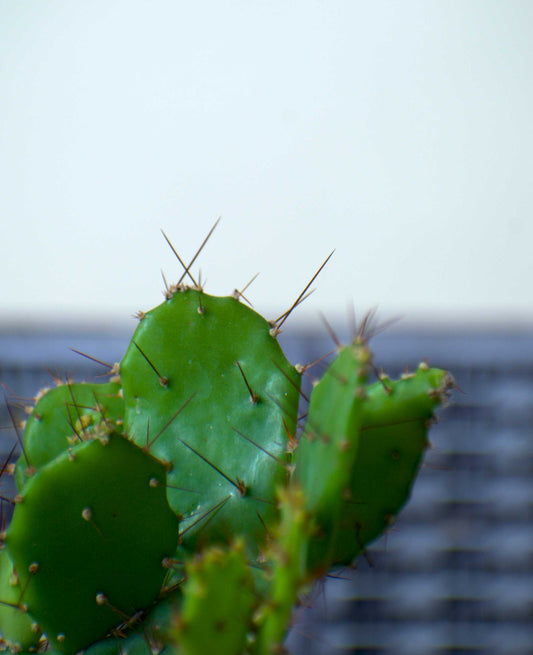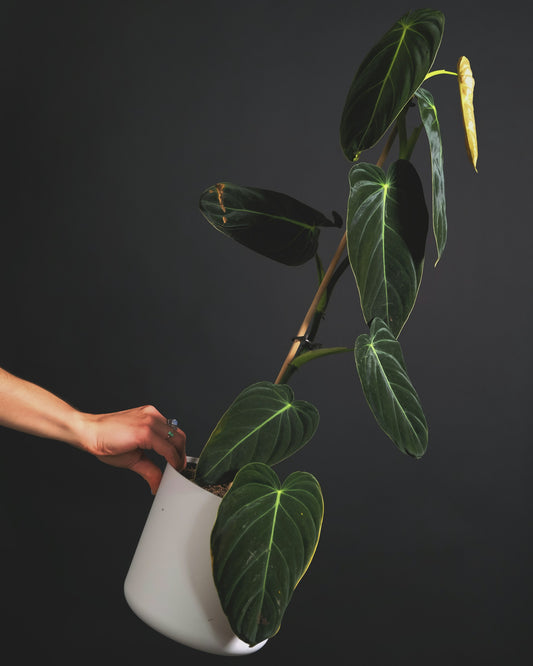Share
9 tips for growing banana plants indoors
Did you know that banana plants are not actually trees but herbs? They are closely related to plants like Ginger and Parrot Flower.
Originally from Asia, bananas are now grown worldwide and there are many varieties to choose from.

With the right care, you can even get small bananas! Here are 9 tips to keep your banana plant looking its best.
1. Choose the right banana tree
The most common banana to grow is the short-growing 'Dwarf Cavendish' banana plant and is the easiest to grow indoors. This banana plant is often labeled in plant stores as 'Musa accuminata' or ' Musa tropicana' but it is actually the same variety. If this banana tree is indoors under grow lights or in a sunny window, it is absolutely possible to get banana fruit.

Dwarf cavendish banana tree indoors in a greenhouse in Wroclaw, Poland.
If you want to grow bananas in Sweden at home, the Dwarf Cavendish banana plant is the safest choice. Not only because it stays at a reasonable height but also because the plant produces fruit relatively quickly and easily. The bananas are of a similar variety to the regular store bananas, only they are smaller and sweeter.
The fiber banana , Musa basjoo, is slimmer and cold-resistant but does not produce fruit, however, it is possible to grow this banana plant outdoors in southern Sweden. It quickly grows into a large tree indoors and we therefore recommend primarily growing this banana outdoors.

Large 'fiber banana' Musa basjoo banana plant
Red banana, also called Ethiopian banana and grown for its decorative red leaves. This variety also does not produce bananas but the stem itself has long been eaten in Africa due to its starchy content.

2. Location and light
Place your banana plant near a south-facing window in direct sunlight. If you don't have much sun at home, you can buy a grow light, the power should be around 50-100w if it's LED. The banana plant thrives best in a warm and humid environment. Banana plants grow faster the warmer it is, so you can put the plant in a glassed-in balcony or greenhouse in the summer.

If the banana plant does not get enough light, it will take a long time for the banana plant to bloom with its tropical fruit.
3. Soil for banana trees
Banana plants love nutrient-rich soil. Mix in plenty of compost and vermicompost when planting your banana. A base of coco coir mixed with about 1/5 perlite and vermicompost will create a nutrient-rich, well-drained soil that will provide the plant with the best conditions to grow bananas at home.

Ourpeat-free soil that we use when growing banana plants indoors
Top up the soil with nutrients either with liquid plant nutrients every time you water or add worm castings to the top soil of the growing pot a couple of times a year. Banana trees love nutrients and this is one of the most common mistakes that leads to a banana tree not blooming.
4. Water a lot
Banana plants thrive in evenly moist soil, they dislike both drying out and standing in wet soil. Keep the soil constantly slightly moist and spray the leaves with water to increase humidity. With good soil like our well-drained peat-free soil for tropical plants, the soil can easily be kept moist without causing root rot. Brown edges on the green leaves of a banana plant are often a sign of too dry soil.
A lot of moisture evaporates from the banana plant's large green leaves, increasing the humidity indoors. Aim for small water droplets to form on the edges of the leaves an hour or so after watering. This will tell you that the entire plant is saturated with water.
5. Create a warm environment
The optimum temperature for banana plants is 26–30 °C. They like warmth but not extreme heat (which is rarely a problem in Sweden). When growing bananas indoors, make sure that the banana is not right next to a radiator in the winter. Despite the heat that is supplied, the air is very dry and this, together with the heat, leads to the leaves drying out easily.

The banana tree that now stands in our store, in the picture about 1 year old
Place the banana plant in a protected location outdoors during the hottest months of summer. Either in a greenhouse, glassed-in balcony or in the garden protected from wind.
6. Pests on banana trees
Banana trees can be affected by pests. Common pests are aphids and spider mites. These insects suck the sap from the leaves. This can cause the leaves to turn yellow and wilt.
Both are easy to get rid of if you follow our tricks.
To combat pests, you can use natural methods. Our own housewife trick is to fill a spray bottle with hand sanitizer or another solution with pure alcohol. Spray the leaves, especially the undersides, a couple of times over 2-3 weeks when you have an outbreak. The alcohol fights the pests, which die immediately on contact with the solution, which evaporates quickly and leaves no or minimal damage to the leaves.
An effective method to get rid of pests like spider mites is to use beneficial insects like spider mites. You buy small bags that come in the mail and you hang them on the leaves. From these bags, very small predatory insects crawl out that feed on the pests and keep the banana plant free from pests.
Another very common pest on banana plants is the fruit fly. These look like slightly larger, darker fruit flies that are always flying around above the soil. They thrive in moist soil and because the banana plant thrives in this, fruit fly is often a problem in indoor cultivation. This can be easily treated with nematodes.

Mourning mosquitoes are attracted to and trapped by yellow insect traps
Nematodes are microscopic predators that attack the larvae of the black fly but also have some effect on thrips. Yellow insect traps are effective against the flies but do not treat the larvae. Together with nematodes in the soil, you can easily become completely free of black fly.
Check your banana trees regularly. Remove infected leaves and spray them with water regularly as a preventative measure. This way you can protect all your indoor tropical trees.
7. Replant in a large pot
Banana plants grow quickly and often need to be planted in large pots. Make sure to choose a pot with drainage holes and fill with new, nutrient-rich soil each time you repot. The larger the pot, the larger the banana tree will be. If you want to grow your banana plants into large trees indoors, you will need large pots for the roots.
8. Propagate your banana plant
Once the mother plant has flowered and borne fruit, it dies, but it leaves behind small shoots at the base. These shoots can be carefully removed and planted to grow new banana plants. Just make sure you get at least one root when you take the cutting from the mother plant. It is sometimes necessary to cut a piece into the tuber of the large banana plant if the shoot is very small.

A shoot of the banana plant musa basjoo. Soon ready to be divided as a cutting and planted in its own pot.
9. When and how to harvest bananas
The bananas are ready to be picked when they are well-shaped and the small flowers on the ends have dried away. In tropical countries, it takes about 6-9 months for a banana tree to bear fruit. If the banana is grown indoors, it will take longer, up to 2-3 years, before you get fruit on your banana plant.

When you have a large plant indoors, you can start expecting tropical fruits soon. The banana flower emerges from the center like new leaves, only the flower is red in color. The flower sits on a stem that bends under the weight of the bunch where bananas will grow and eventually ripen.
You can let them ripen on the plant or bring them inside and let them ripen in the kitchen. Ripe bananas harvested directly from the banana plant taste the best. Is there anything cooler than eating bananas grown at home in the living room?
Closing thoughts
A banana plant is not only a beautiful and exotic indoor plant. It also brings a little bit of the tropics into your home. Whether you grow it for its fruit or just as a tropical decoration, banana trees are a fantastic addition to your indoor garden.










